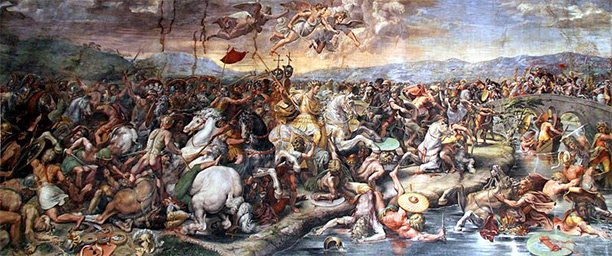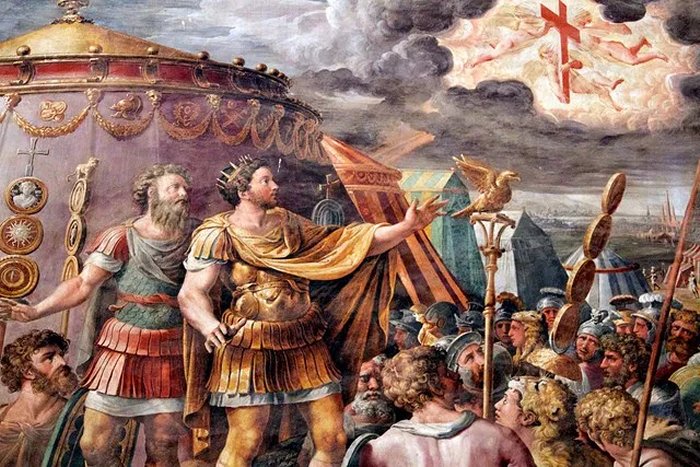How The Strange Dream Of Roman Emperor Constantine Changed History
Ellen Lloyd - AncientPages.com - Ancient people often considered dreams to be omens about the future and this belief is still encountered in our modern society. Today many are convinced that some of our dreams can determine destiny and the belief in precognitive dreams is widespread.
The Battle of the Milvian Bridge (1520–24) by Giulio Romano.
One of the strangest and most famous dreams of antiquity took place in the year 312 AD when the Roman emperor Constantine engaged in one of the greatest battles of his life.
Constantine the Great (274 AD – 337AD) is perhaps best known for being the first Christian Roman Emperor. His rule changed the Church greatly. In February 313, Constantine met with Licinius in Milan where they made the Edict of Milan. The edict said that Christians could believe what they wanted.
The Battle Of The Milvian Bridge
Roman Emperor Constantine was a pagan monotheist, a devotee of the sun god Sol Invictus, the unconquered Sun, but the battle of the Milvian Bridge and his dream changed his faith.
Faced with a rival army twice the size of his own, Roman Emperor Constantine realized that he probably would die in battle the next day.
Before the Milvian Bridge battle, he and his army saw a cross of light in the sky above the sun with words in Greek that are generally translated into Latin as In hoc signo vinces (‘In this sign conquer).
The night before the Emperor had a very powerful dream. In his dream an angel appeared before him bearing the image of a cross, uttering the fateful words “By this symbol, you shall conquer.”
Raphael, c.1508, Museum of Vatican, Rome, Italy
According to historical records, Roman Emperor Constantine was so impressed that he ordered the shields of his troops adorned with the symbol of the cross. He won the battle and took the power of the Roman Empire.
It was a difficult time for Christians who had been persecuted for centuries by previous Roman emperors and whose adherents were regularly fed to the lions in the Colosseum, but the Roman Emperor changed history.
On June 13, 313 AD, Edict of Milan was signed by Roman Emperor Constantine and the persecution of Christians ended.
When Emperor Constantine ascended to the throne, he took the opposite track, extending an offer of peace and recognition to Christians. signed laws that would eventually pave the way for it to become an official religion of one of the greatest empires in the world.
One can easily say that his dream of the angel and the cross changed history.
Written by Ellen Lloyd – AncientPages.com
Copyright © AncientPages.com All rights reserved. This material may not be published, broadcast, rewritten or redistributed in whole or part without the express written permission of AncientPages.com
More From Ancient Pages
-
 Ancient Mystery Of The Enigmatic ‘Cat Men’ – Advanced Prehistoric Machines Or Humanoids? – Part 2
Featured Stories | Jan 20, 2021
Ancient Mystery Of The Enigmatic ‘Cat Men’ – Advanced Prehistoric Machines Or Humanoids? – Part 2
Featured Stories | Jan 20, 2021 -
 Unkulunkulu: ‘Great Oldest One’ Progenitor Of Mankind, Creator Of All Things And Origin Of Death In Beliefs Of Zulu People
African Mythology | Sep 30, 2019
Unkulunkulu: ‘Great Oldest One’ Progenitor Of Mankind, Creator Of All Things And Origin Of Death In Beliefs Of Zulu People
African Mythology | Sep 30, 2019 -
 Creepy Story Of Lucida Mansi Who Was Obsessed With Her Beauty
Featured Stories | Jul 31, 2019
Creepy Story Of Lucida Mansi Who Was Obsessed With Her Beauty
Featured Stories | Jul 31, 2019 -
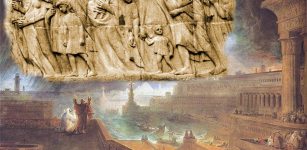 Is Ipuwer Papyrus A Report Of An Ancient Catastrophe?
Artifacts | Aug 7, 2017
Is Ipuwer Papyrus A Report Of An Ancient Catastrophe?
Artifacts | Aug 7, 2017 -
 Evidence Of Dual Mass Extinctions 260 Million Years Ago – Found
Fossils | Apr 10, 2023
Evidence Of Dual Mass Extinctions 260 Million Years Ago – Found
Fossils | Apr 10, 2023 -
 Mysterious White Mass On The Heads Of The Tarim Basin Mummies Identified
Archaeology | Oct 1, 2024
Mysterious White Mass On The Heads Of The Tarim Basin Mummies Identified
Archaeology | Oct 1, 2024 -
 10 Christian Symbols Explained
Ancient Symbols | Jul 28, 2018
10 Christian Symbols Explained
Ancient Symbols | Jul 28, 2018 -
 Fascinating Portable Art From Torre Cave, Gipuzkoa – One Of The Most Complete Specimens From The Entire Iberian Peninsula
Archaeology | May 26, 2023
Fascinating Portable Art From Torre Cave, Gipuzkoa – One Of The Most Complete Specimens From The Entire Iberian Peninsula
Archaeology | May 26, 2023 -
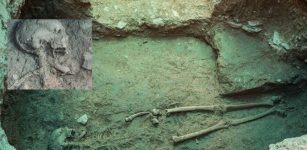 Human Skeleton Dated To Parthian Era Unearthed At Tepe Ashraf In Iran’s City Of Isfahan
Archaeology | Jul 25, 2020
Human Skeleton Dated To Parthian Era Unearthed At Tepe Ashraf In Iran’s City Of Isfahan
Archaeology | Jul 25, 2020 -
 The First Conservationists May Have Been Early Pacific Islanders Who Started The Practice 3,000 Years Ago
Archaeology | Sep 29, 2021
The First Conservationists May Have Been Early Pacific Islanders Who Started The Practice 3,000 Years Ago
Archaeology | Sep 29, 2021 -
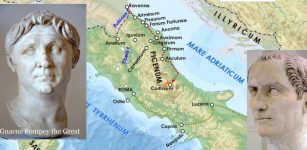 On This Day In History: Julius Caesar Defeated “Pompey The Great” At Pharsalus – On August 9, 48 BC
News | Aug 9, 2016
On This Day In History: Julius Caesar Defeated “Pompey The Great” At Pharsalus – On August 9, 48 BC
News | Aug 9, 2016 -
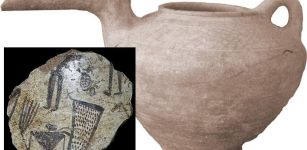 7,000-Year-Old Tepe Ozbaki Mounds Yielded Valuable Relics – But Now The Site Is In Trouble
Archaeology | Nov 25, 2020
7,000-Year-Old Tepe Ozbaki Mounds Yielded Valuable Relics – But Now The Site Is In Trouble
Archaeology | Nov 25, 2020 -
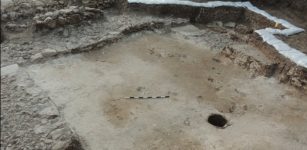 Canaanite Wine Palace At Tel Kabri May Have Been Destroyed By Earthquake
Archaeology | Sep 15, 2020
Canaanite Wine Palace At Tel Kabri May Have Been Destroyed By Earthquake
Archaeology | Sep 15, 2020 -
 Ancient Europeans Ate Seaweed And Freshwater Plants – Evidence Found
Archaeology | Oct 17, 2023
Ancient Europeans Ate Seaweed And Freshwater Plants – Evidence Found
Archaeology | Oct 17, 2023 -
 On This Day In History: American Archaeologist George A. Reisner Was Born – On Nov 5, 1867
News | Nov 5, 2016
On This Day In History: American Archaeologist George A. Reisner Was Born – On Nov 5, 1867
News | Nov 5, 2016 -
 Jack o’ Legs – The Kind Hertfordshire Giant Who Robbed The Rich And Gave To The Poor
Featured Stories | Sep 20, 2021
Jack o’ Legs – The Kind Hertfordshire Giant Who Robbed The Rich And Gave To The Poor
Featured Stories | Sep 20, 2021 -
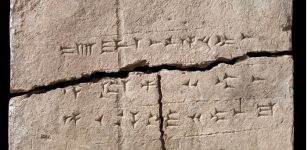 Ancient DNA Extracted From A 2,900-Year-Old Clay Brick – Unique Time Capsule Of Plant Life
DNA | Aug 23, 2023
Ancient DNA Extracted From A 2,900-Year-Old Clay Brick – Unique Time Capsule Of Plant Life
DNA | Aug 23, 2023 -
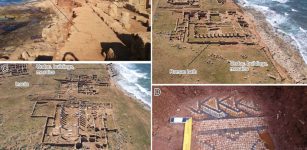 Archaeological Sites At Risk From Coastal Erosion On The Cyrenaican Coast Of Libya
Archaeology | Apr 15, 2023
Archaeological Sites At Risk From Coastal Erosion On The Cyrenaican Coast Of Libya
Archaeology | Apr 15, 2023 -
 What Was The Agriculture Like In Southeast China In The Late Neolithic?
Archaeology | Apr 11, 2022
What Was The Agriculture Like In Southeast China In The Late Neolithic?
Archaeology | Apr 11, 2022 -
 Eastern Necropolis Of Ancient Thracian And Roman City Of Serdica – Unearthed
Archaeology | Apr 10, 2017
Eastern Necropolis Of Ancient Thracian And Roman City Of Serdica – Unearthed
Archaeology | Apr 10, 2017

